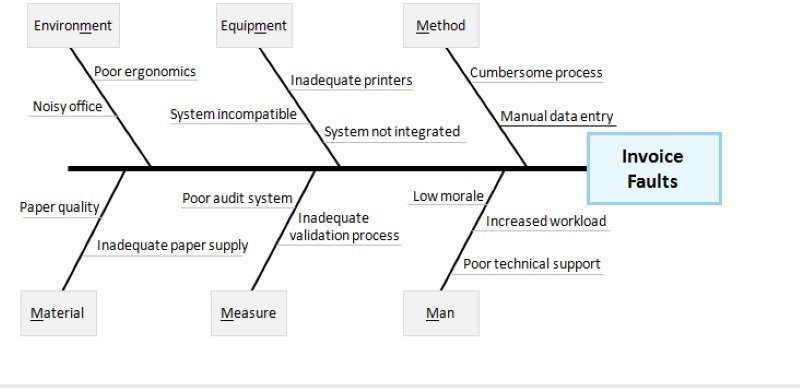
To create a new category, right click any empty space inside the fish, then select Add Category from the toolbar.ġ1. Repeat step 5 to 8 above to create more primary and secondary causes.ġ0. The process of creating an Ishikawa diagram can also help create a shared understanding. It can be used in any industry and for many purposes, including identifying manufacturing defects and process improvement. Rename the secondary cause Cause by double clicking it.ĩ. The Fishbone diagram (Ishikawa diagram) was developed in the 1960s and provides a visual way to find the causes of a problem. Double click Cause and rename it to Library workers aren’t adequately informed, then create a secondary cause by right clicking Library workers aren’t adequately informed and select Add Secondary Cause.Ĩ. Double click Category1 to rename it to Man, then right click Man and select Add Primary Cause from the toolbar to create a new primary cause.ħ. Fishbone Analysis (also called Ishikawa, herringbone, cause-and-effect diagrams or Fishikawa) is a tool created by Kaoru Ishikawa in 1968 as part of his.

In this case, we will rename it to Difficulty on Locating a Drawing.Ħ. Double click Problem on the right hand side of the diagram, then rename it. Name the diagram (for example: Difficulty on Locating a Drawing), then click OK to finish creating a new diagram.Ĥ. In the New Diagram window, choose Cause and Effect Diagram (a fishbone diagram is also know as a cause and effect diagram), then click Next at the bottom of the window.ģ.
#ISHIKAWA DIAGRAM TUTORIAL SOFTWARE#
Looking for the Best Easy Software For Creating Fishbone Diagram? Creating a Fishbone Diagram with Visual ParadigmĢ.

When having difficulty understanding contributing factors or causes of a system failure.When identifying possible causes for a problem.It may be used in conjunction of the “five-whys” technique. It helps identify stakeholder ideas about the causes of problems and allows the user to immediately categorize ideas into themes for analysis or further data gathering. 3.2 Cause and Effect Diagram Tool What is Fishbone Diagram?įishbone Diagram (also known as Cause and Effect Diagram or Ishikawa Diagram) visually displays multiple causes for a problem.


 0 kommentar(er)
0 kommentar(er)
